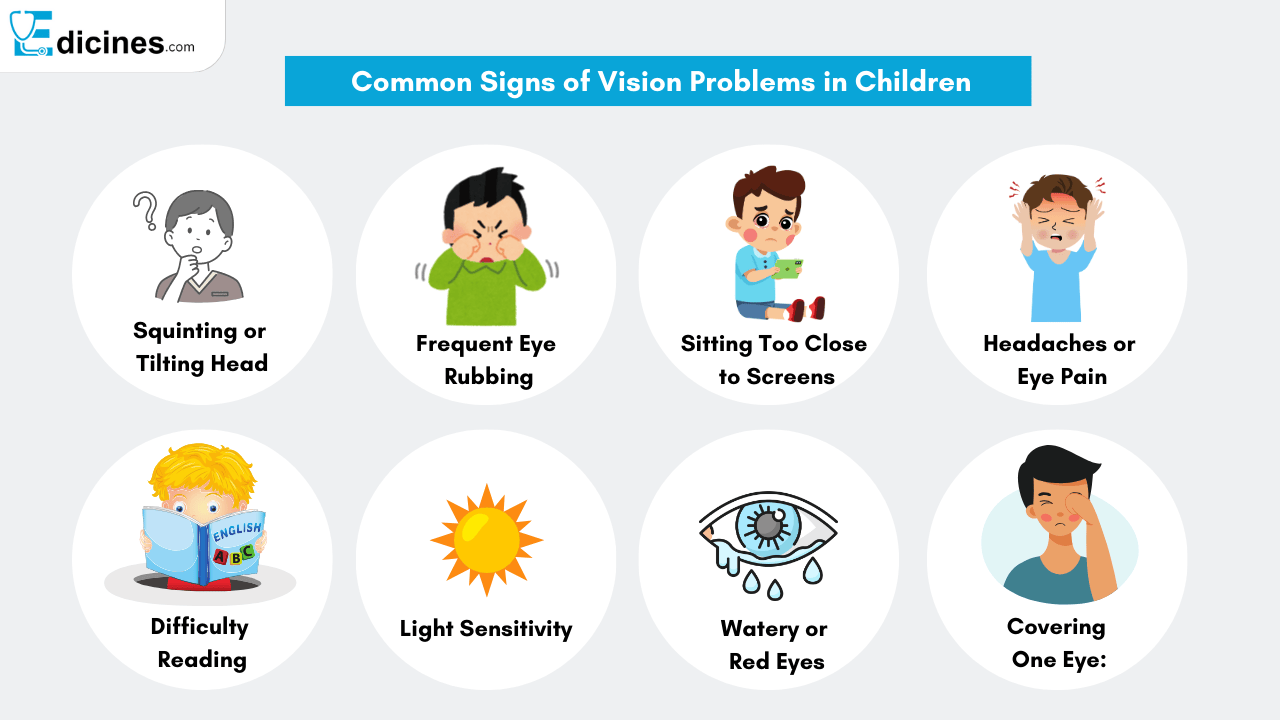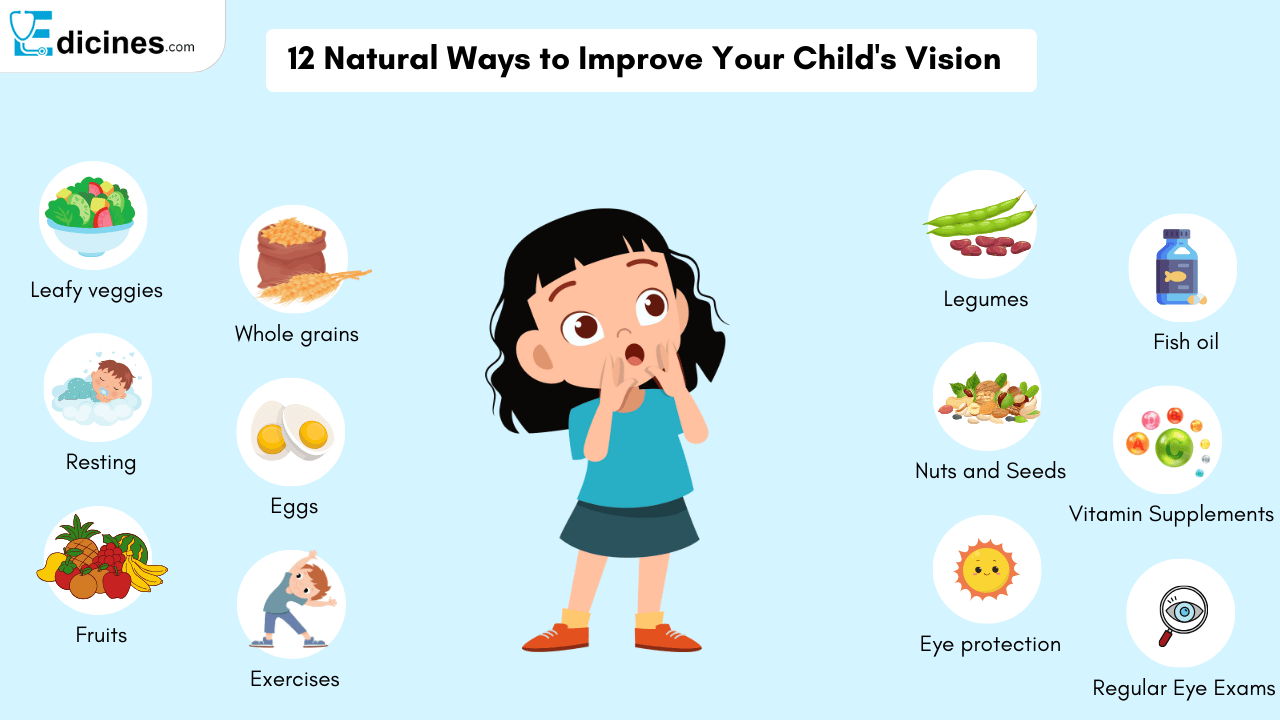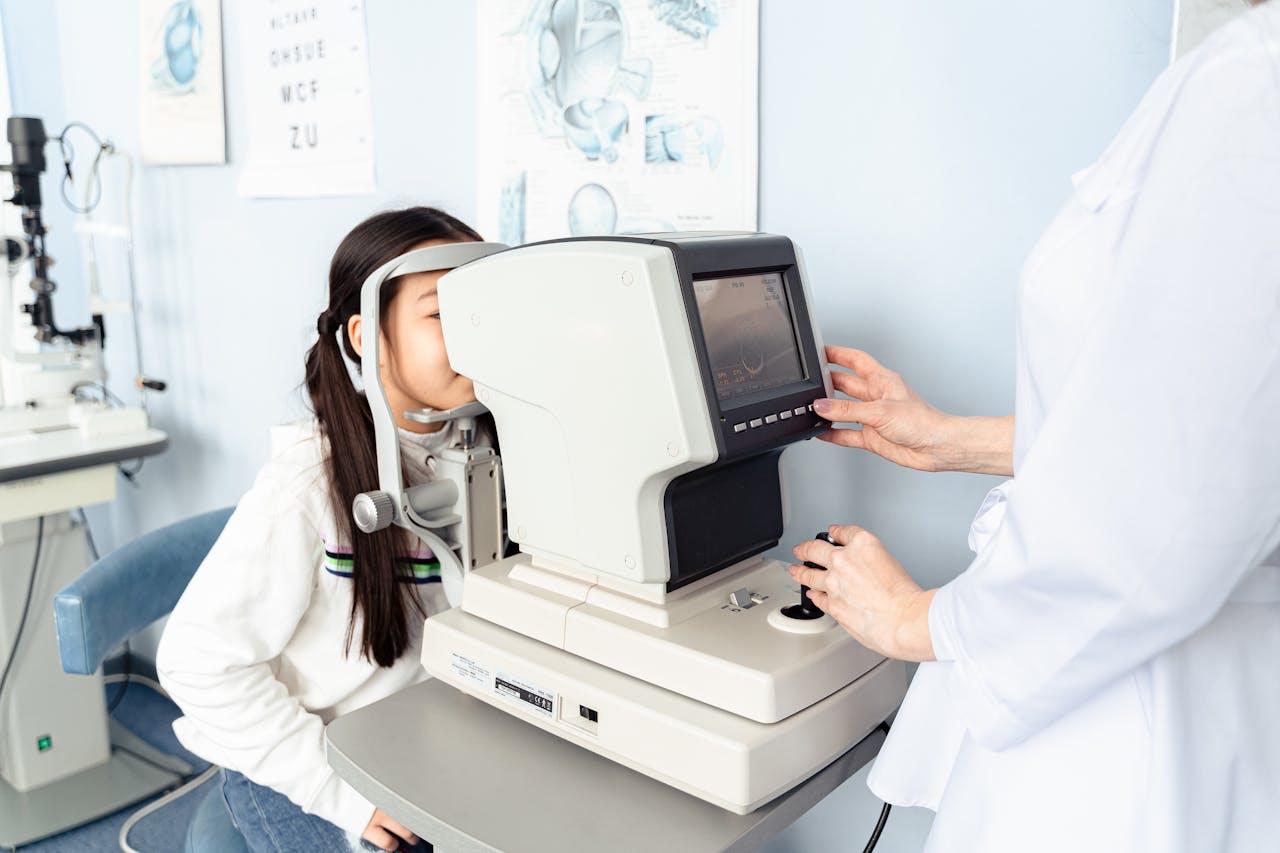Children’s eye health is critical for their holistic growth as well as their quality of life. Poor eyesight can have serious implications on learning, socialization and mental health. Regular eye check-ups are necessary in order to identify vision problems early enough and treat them accordingly.
This article will include common eye diseases in children, cruciality of eye check-ups, prevention tips as well as treatment methods.
Why Eye Health is Crucial for Children
There are various reasons why good vision is so important:
1. Growing Up
In order for children to develop cognitively and socially, they need clear sight to help them understand their surroundings. Kids learn about their surroundings through sight, which helps them interact and connect with others.
2. Education
Poor eyesight can hold kids back in school. When kids struggle to see clearly, it can be frustrating and make learning difficult. This can lead to low self-esteem and make it harder for them to do well.
Around 80% of all info that comes into a child’s mind is through his/her eyes meaning good eyesight is paramount in education.
3. Recommendations
According to the National Center for Children’s Vision and Eye Health, regular visitation to eye doctors may help minimize future problems. With this, it would be possible to detect sight problems in children early enough and manage them so that they can have normal eyesight as they grow up.
How Often Should Children Have Eye Exams?
According to their ages, the importance of regular eye check-ups varies.
The following are age-wise considerations:
1. For Infants (0-12 months)
Babies should have their first eye exam between 6 and 12 months old to check for any birth defects.
2. For Toddlers (1-3 years)
Toddlers should have at least one eye exam between the ages of 1 and 3 to monitor their eye development.
3. For Preschoolers (3-5 years)
Children should have eye exams at age 3. If everything looks okay, they can have follow-up exams every other year.
For School-age children (6-18 years)
It is advisable for them to go through yearly eye examinations since these will help identify alterations in vision during their growth and development process.
What Happens During an Eye Check-up?
Routine eye exams are essential for children’s overall health and development. These exams can help detect and address any vision problems early on, preventing potential learning difficulties and other issues.
During a comprehensive eye exam, a doctor will assess a child’s vision, eye alignment, and the health of their eyes.
They may use various tools and techniques, such as eye charts, special lenses, and dilation drops, to evaluate a child’s vision.
If any vision problems are identified, appropriate corrective measures, such as glasses or contact lenses, can be prescribed by optometrists or ophthalmologists.
At-Home Tests:
There are many things that we could do as parents to ensure our children’s long-term vision is not compromised. For instance you could have your child read letters off an eye chart from across the room. They can also notice if they engage in activities such as squinting or reading too closely – things that may tell something about their sight.
Signs and Symptoms of Vision Problems in Children

Look out for these common signs of vision problems:
Squinting or Tilting The Head
This could mean that your child is having problems focusing upon objects, which suggests that they are trying hard to see things clearly.
Frequent Headaches
Headaches can be caused by eye strain and may be an indication of underlying vision diagnosis.
Watery or Red Eyes
Constant watery or red eyes can be a sign of eye strain, infections, or other eye conditions.
Difficulty Reading or Seeing Objects
Problems with distance or near-vision abilities may indicate early cases of myopia or hyperopia.
Specific conditions
Myopia (Nearsightedness or Nearsighted)
Kids might have difficulty looking at things located far away clearly when things near them seem normal.
Hyperopia (Farsightedness)
Near objects are hard to focus on hence causing pain in eyes and headache.
Astigmatism
When the shape of the cornea is not regular, then it becomes responsible for all blurry vision.
Understanding Amblyopia (Lazy Eye)
Amblyopia is a common condition where one eye has weaker vision than the other. This can happen if the eyes don’t align correctly or if there are other problems with vision. If left untreated, amblyopia can lead to permanent vision problems.
Early Detection and Treatment Options:
Patching
To encourage visual growth in a weak eye, this method entails covering the stronger one.
Corrective Lenses
Glasses assist in correction of refractive errors therefore improving sight in an affected eye.
To manage amblyopia effectively, early diagnosis and treatment are crucial, hence eye examinations should be pursued by parents actively.
Understanding Strabismus (Crossed Eyes)
Strabismus, commonly referred to as “crossed eyes,” is a condition where the eyes do not align properly. This misalignment can cause one or both eyes to turn inward, outward, upward, or downward.
Types of Strabismus:
Esotropia: The eyes turn inward.
Exotropia: The eyes turn outward.
Hypertropia: One or both eyes turn upward.
Hypotropia: One or both eyes turn downward.
Treatment for Strabismus:
Eye exercises
It might assist in enhancing the eye muscles and better coordination.
Glasses
Corrective lenses can prevent other sight problems from leading to strabismus.
Surgery
In extreme cases surgery is a must in order to match the eyes’ position.
Preventing strabismus-related long term challenges requires immediate response.
Protecting Your Children’s Eye Health from the Sun
Protection from the sun is vital in keeping children’s eyesight healthy. This is because during their early age period under development, eye bulbs are subject to devastation through ultraviolet rays which in future will result in the development of cataracts as well as other forms of eye ailments.
Protecting from Sun Rays:
Select Appropriate Sunglasses
Ensure that you select those sunglasses which filter out one hundred percent of UVA and UVB rays as a guarantee for proper protection.
Diminish Exposure to Sunlight
In between the hours of 10:00 am and 4:00 pm when the UV rays are stronger let your child play under shade instead.
Educate Them
Teach your child about the importance of sun protection.
Are Tablets and Screens Bad for Children’s Eyes?
Continued use of screens can lead to eye strain, dry eye syndrome, and computer vision syndrome (CVS), causing discomfort and eye fatigue. Effective management strategies are essential to mitigate these issues.
Strategies to Mitigate Eye Strain:
Here are some effective strategies to help protect their vision:
Follow the 20-20-20 Rule
Every 20 minutes, have your child look at something 20 feet away for 20 seconds to reduce fatigue.
Encourage breaks
Limit continuous screen time to avoid discomfort and promote healthier habits.
Adjust Screen Settings
Reduce brightness: A dimmer screen can be easier on the eyes.
Increase font size: Larger text can help reduce eye strain.
Use night mode: This feature reduces blue light emission, which can contribute to eye fatigue.
Limit Screen Time
Set screen time limits: Establish guidelines for daily screen usage.
Prioritize outdoor activities: Encourage your child to participate in activities that don’t involve screens.
How to Improve Your Child’s Eyesight Naturally

A nutritious dietary intake greatly boosts children’s eyesight well-being. Below are some diet guidelines:
Vitamin A, C and E: For eye health, they are essential vitamins that come from foods like carrots, leafy greens and citrus fruit.
Omega-3 fatty acids: This type of fat can be found in fish which also promote general eye wellness possibly preventing dryness in the ocular area.
Promoting Outdoor Activities:
When kids participate in more outdoor activities, it reduces the chances of them being glued to their screens and improves eye wellbeing as their eyesight then gets adjusted to far objects.
Common Eye Conditions in Children
Familiarize yourself with these eye situations:
Myopia
This condition that is becoming more common nowadays, it is also found among school children making it paramount for parents to notice change in visions.
Hyperopia
It makes reading difficult for beginners and younger kids have a hard time focusing on things through this eyes defected .
Astigmatism
As this problem may not be diagnosed during regular check-ups, so periodic eye check-ups are very important.
Early indicators should be taken seriously and if there are symptoms seen, then go for an eye doctor examination.
Can a Child’s Vision Be Corrected?
Apparently, there are many ways that corrective treatment can work on children with sight problems:
Eyewear: A prevalent means for refractive error correction. Updated prescriptions are needed continuously so that one can have the best eye sight.
Contact lenses: It’s an alternative option for older kids and teens which might be more comfortable than wearing spectacles.
Surgical procedure: In some instances, like severe cases of refractive errors surgical choices may arise.
The positive long-term prognosis of sight correction is true since most kids can have normal vision through these ways.
Frequently Asked Questions
What is the recommended eyesight for kids?
The recommended eyesight for kids is 20/20 but it can vary depending on various factors such as their age or period of development.
How can I check my child’s vision at home?
Child vision can be tested at home by using an easy eye chart or online vision tests to see whether they are able to read letters from far away. Signs like squinting or tilting one’s head are sometimes indications of poor sight.
How can you assess your child’s vision at home?
Use basic vision chart or web-based checks to see whether they are able to identify characters far away from them. Search for signs of strabismus or head bend as signs of eyesight impairment.
What are the ways of improving eyesight in kids without using surgeries or medications?
A balanced diet rich in nutrients like vitamins A, C, E, and zinc, along with regular eye exams, limited screen time, and plenty of outdoor activities, can support healthy eye development in children.
While there’s no guaranteed way to improve eyesight without medical intervention, these lifestyle changes can help prevent vision problems and maintain eye health.
Conclusion
Eye health of children requires being kept and improved as the overall general health of the child. Early detection and management of sight problems through eye examinations regularly done is also crucial. In addition to that, promotion of proper nutrition, good habits and routine eye care will help in maintaining healthy eyesight all through childhood.













